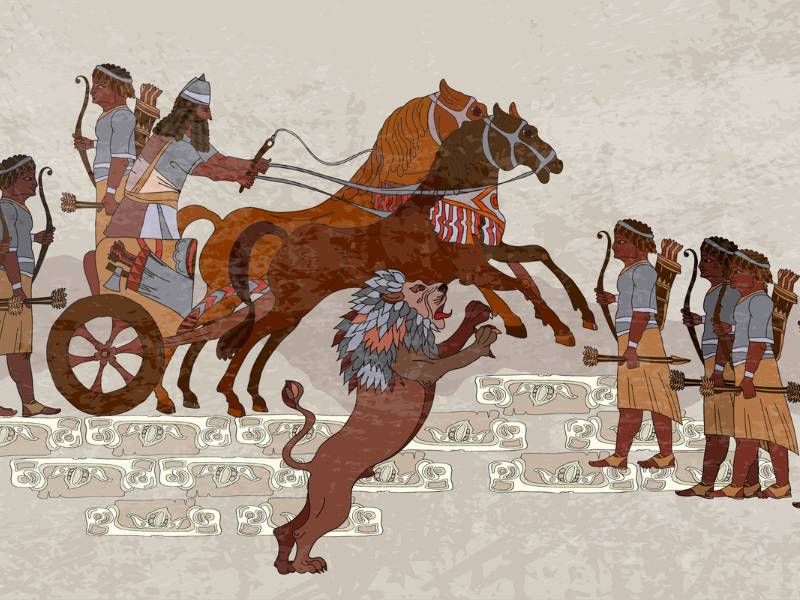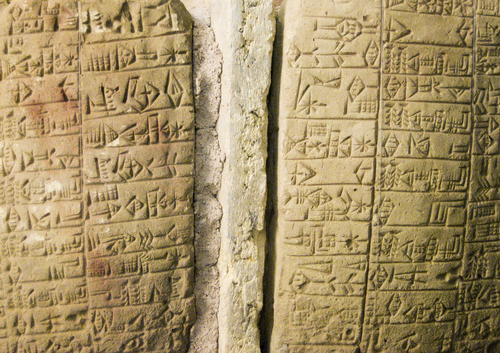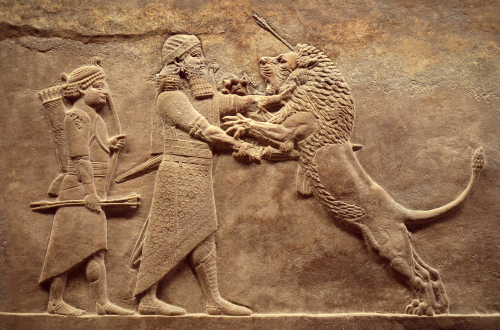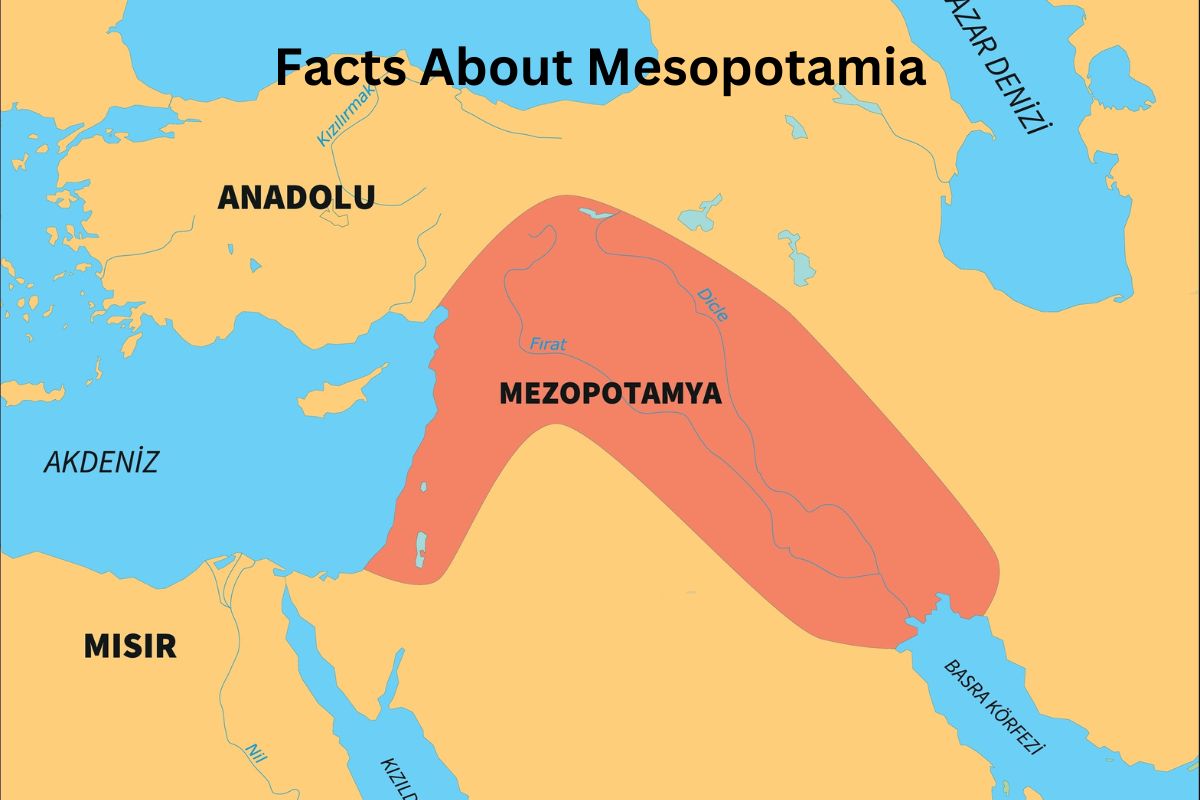Mesopotamia, located in the eastern Mediterranean region, was one of the cradles of civilization. The name itself means “between the rivers” in Greek, referring to the fertile land between the Tigris and Euphrates rivers.
Ancient Mesopotamia was home to influential civilizations such as:
- The Sumerians
- The Akkadians
- The Babylonians
- The Assyrians
These civilizations made significant contributions to human history, including the development of writing systems, the creation of legal codes, advancements in agriculture through irrigation, and the establishment of complex social structures.
Mesopotamia’s rich cultural heritage and its impact on various fields of knowledge have left a lasting legacy that continues to shape our understanding of early civilizations.
Mesopotamia Facts
1. Mesopotamia is considered one of the cradles of civilization
Mesopotamia was a fertile region located in the eastern Mediterranean. It is widely regarded as one of the birthplaces of human civilization due to the significant advancements and achievements made by the ancient civilizations that thrived there.
Also Read: Mesopotamia Timeline
The innovations and cultural developments that emerged from Mesopotamia laid the foundation for various aspects of human society, including agriculture, governance, writing, mathematics, and more.

2. The name “Mesopotamia” means “between the rivers” in Greek
Mesopotamia owes its name to its geographical location between two major rivers—the Tigris and Euphrates. These rivers were central to the lives of the people in the region, providing a vital source of water and nourishment for agriculture.
Also Read: Accomplishments of Mesopotamia
The Tigris and Euphrates rivers played a crucial role in shaping the development and prosperity of the civilizations that arose in Mesopotamia, enabling the growth of settlements and the establishment of complex societies.
3. The Sumerians developed cuneiform, one of the earliest writing systems
The Sumerians, who inhabited southern Mesopotamia around 4000 BCE, made remarkable contributions to human civilization, and one of their most significant achievements was the development of writing.
The Sumerians created a writing system known as cuneiform, which involved making wedge-shaped marks on clay tablets using a stylus. Cuneiform was not only used for record-keeping but also for writing literature, poetry, legal documents, administrative texts, and more.
This early writing system allowed for the preservation and dissemination of knowledge, facilitating advancements in various fields and greatly influencing the development of writing systems in later civilizations.

4. Mesopotamia was home to ancient civilizations like the Sumerians, Akkadians, Babylonians, and Assyrians
Mesopotamia witnessed the rise and fall of several powerful civilizations throughout its history. The Sumerians, considered the earliest civilization in Mesopotamia, developed a complex society characterized by city-states, sophisticated agriculture, and advancements in arts, architecture, and literature.
The Akkadians, led by Sargon of Akkad, established the first empire in history, uniting various city-states under one rule.
The Babylonians, with Hammurabi as their most famous ruler, developed a centralized state and created a legal code that influenced subsequent legal systems. The Assyrians built a vast empire known for its military prowess and administrative innovations.
5. The Code of Hammurabi is one of the most well-known ancient legal codes
Hammurabi, the Babylonian king who reigned in the 18th century BCE, issued a comprehensive legal code known as the Code of Hammurabi.
This code consisted of 282 laws that covered a wide range of aspects of Babylonian society, including commerce, property, marriage, family, and crime. The code aimed to establish justice, protect the weak, and maintain order.
It had a significant impact on subsequent legal systems and reflected the principle of “an eye for an eye, a tooth for a tooth.”
6. Mesopotamia was reliant on irrigation for agriculture
The arid climate of Mesopotamia necessitated the development of sophisticated irrigation systems to support agriculture. The people of Mesopotamia built an intricate network of canals and channels to divert water from the Tigris and Euphrates rivers to their fields.
By controlling the water supply, they were able to cultivate crops such as barley, wheat, dates, vegetables, and other staples. The success of irrigation in Mesopotamia allowed for surplus food production, sustained population growth, and the emergence of urban centers.
It also led to the development of administrative systems to manage water resources and maintain the canals, further contributing to the growth and complexity of Mesopotamian societies.
7. The Babylonians developed a sexagesimal numeral system
The Babylonians, particularly during the time of the Old Babylonian Empire (c. 18th to 16th centuries BCE), made significant contributions to mathematics. They developed a base-60 numeral system known as sexagesimal.
This system is still influential today, as it is the basis for measuring time (with 60 seconds in a minute and 60 minutes in an hour) and angles (with 360 degrees in a circle).
The sexagesimal system allowed for precise calculations and was a remarkable achievement in ancient mathematics.

8. Mesopotamians believed in multiple gods and goddesses
Religion played a central role in the lives of the people of Mesopotamia. They believed in a pantheon of deities and worshiped various gods and goddesses, each associated with different aspects of life and nature.
The Mesopotamian religious beliefs influenced their social customs, rituals, and worldview. Temples were erected to honor the gods, and priests held significant positions within society.
Mythologies and epic poems, such as the famous Epic of Gilgamesh, emerged from Mesopotamian religious beliefs and were passed down through generations.
9. Mesopotamian society had a hierarchical structure and slavery was prevalent
Mesopotamian society was organized in a hierarchical manner. At the top of the social hierarchy were kings and rulers, who held significant political and religious authority.
The priesthood also occupied a privileged position, as they were considered intermediaries between the gods and humans. Wealthy landowners, merchants, artisans, and skilled workers formed the middle class.
At the bottom of the social order were farmers, laborers, and slaves. Slavery was widespread in Mesopotamia, with slaves being acquired through various means, including capture in warfare or as a result of debt bondage.
10. Mesopotamian civilizations fell to various external powers throughout history
Despite their advancements and prosperity, Mesopotamian civilizations faced numerous invasions and conquests by external powers.
The region witnessed the rise and fall of different empires, including the Persians, Greeks under Alexander the Great, Parthians, and finally, the Muslim Arabs in the 7th century CE. These conquests brought significant political, cultural, and religious changes to the region.
However, the legacy of Mesopotamia continues to endure through its contributions to human civilization, its architectural marvels, and the knowledge preserved in its texts and artifacts, which provide valuable insights into ancient history.
